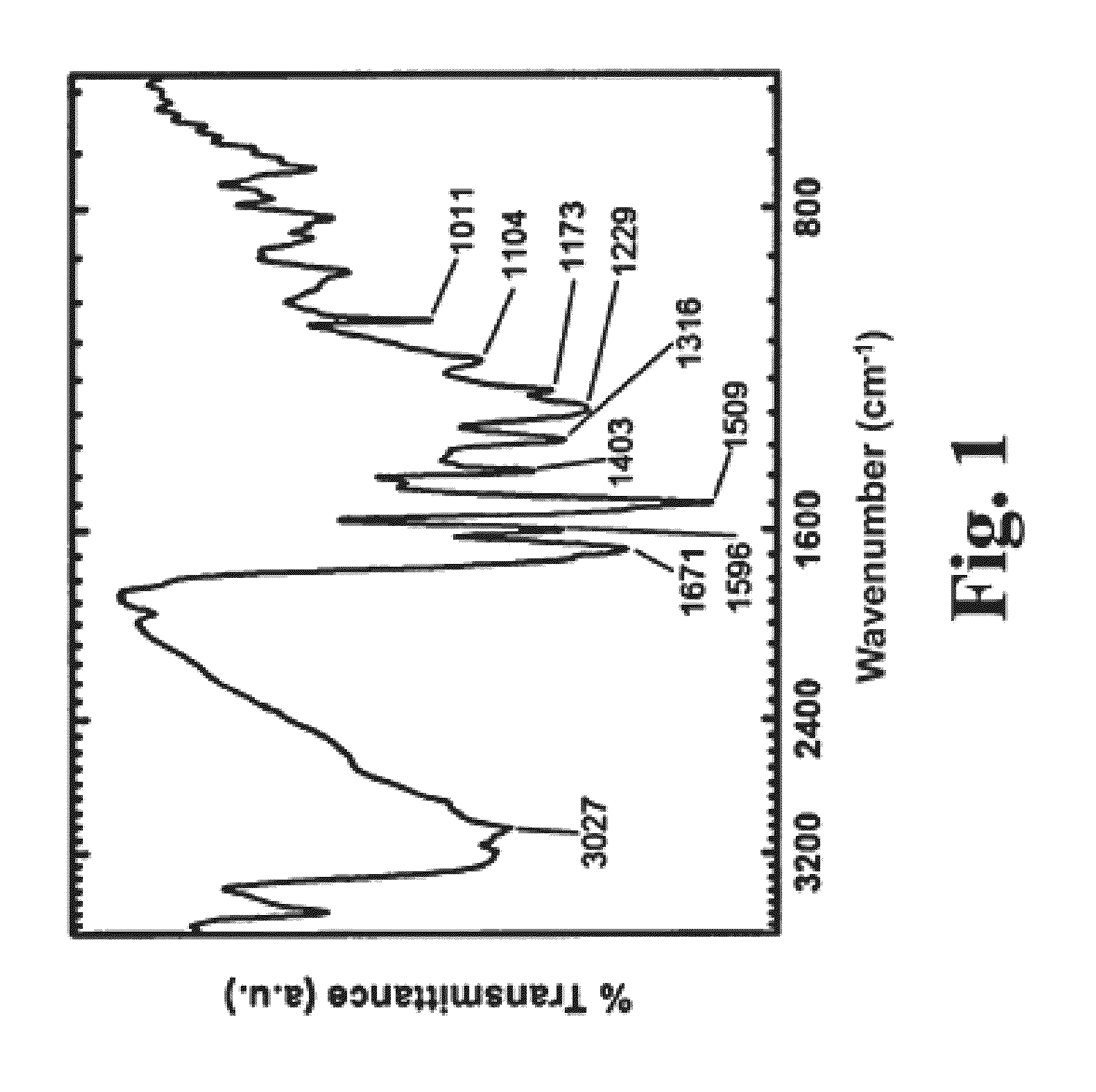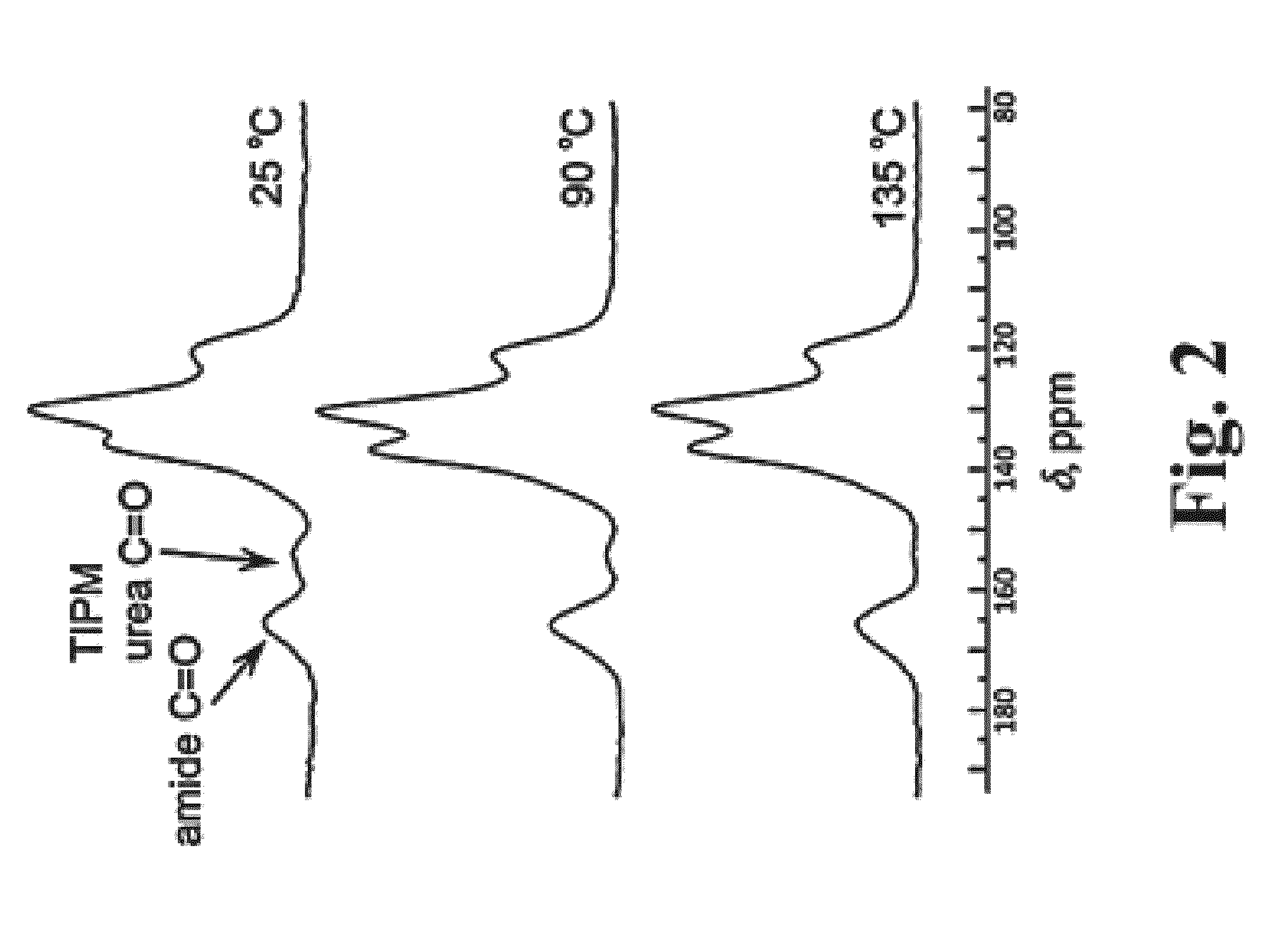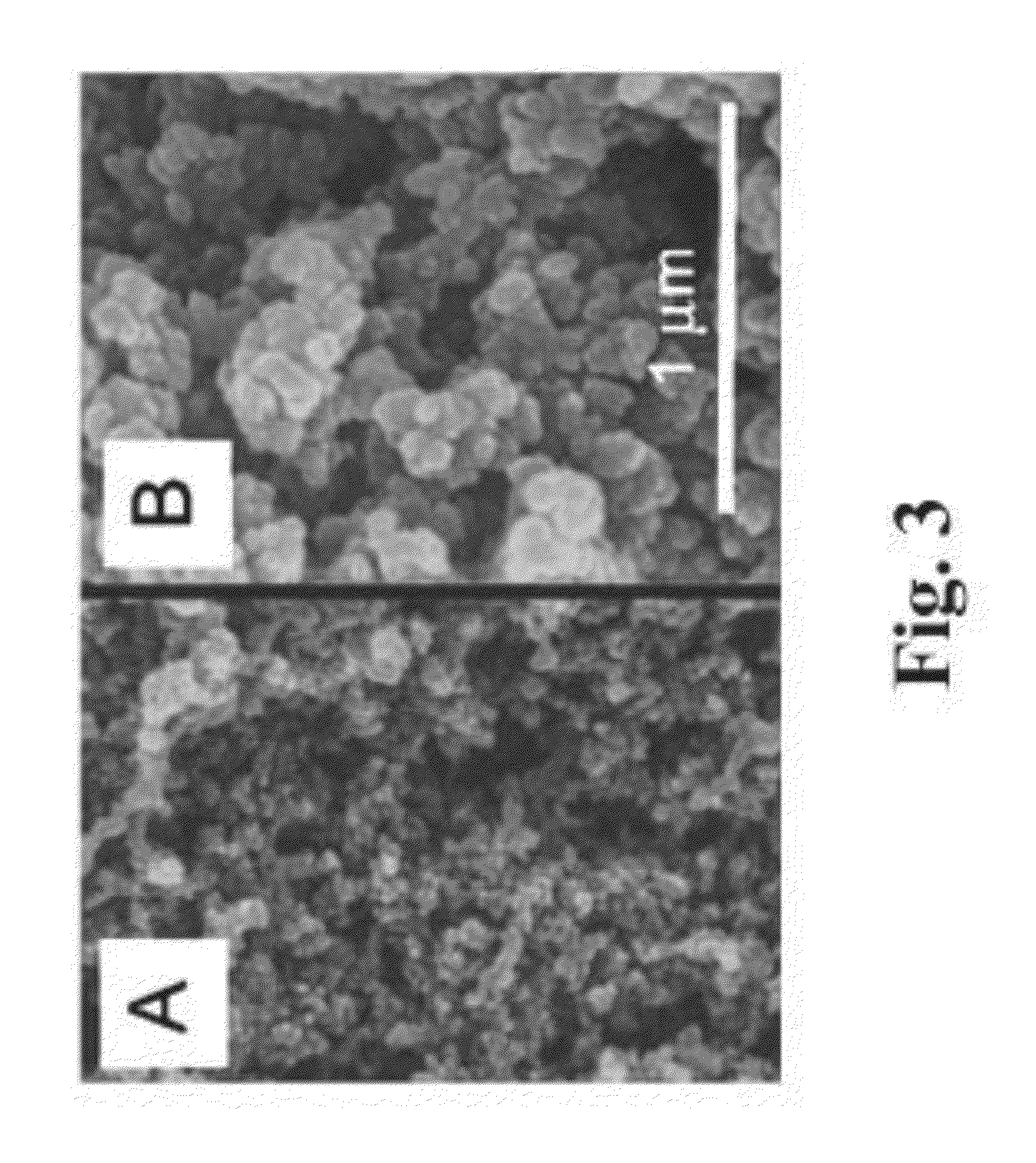Multifunctional porous aramids (aerogels), fabrication thereof, and catalytic compositions derived therefrom
a technology of porous aramids and polyamides, applied in the direction of catalyst activation/preparation, metal/metal-oxide/metal-hydroxide catalysts, hydrocarbon preparation catalysts, etc., can solve the problems of difficult to control the pore texture of carbon matrix, aerogels with poor mechanical properties, time-consuming and inefficient, etc., to achieve convenient, simple and versatile effects
- Summary
- Abstract
- Description
- Claims
- Application Information
AI Technical Summary
Benefits of technology
Problems solved by technology
Method used
Image
Examples
example 1
Synthesis of Aramid Aerogels
[0082]A solution of TIPM as received (Desmodur RE, 13.3 mL (13.6 g), containing 3.67 g of TIPM in anhydrous ethylacetate, 0.01 mol) and TMA (2.10 g, 0.01 mol) in varying amounts of anhydrous DMF (e.g., 24.0 mL (22.6 g) for 15% w / w solids) was stirred at 90° C. under N2 for 1 h. The resulting sol was poured into polypropylene molds (Wheaton polypropylene OmniVials, Part No. 225402, 1 cm diameter), which were sealed in a glove box and heated at 90° C. for 24 h. (The 15% w / w sol gels in 2.5 h from mixing.) Gels were washed with DMF, acetone (4× with each solvent, using 4× the volume of the gel) and dried with liquid CO2 in the form of a supercritical fluid (SCF). The same procedure was followed at room temperature and at 135° C. (using glass molds) for the CPMAS 13C NMR studies.
[0083]The method provided is essentially a one-pot, one-step process carried out according to equation 1.
Monolithic aerogels of variable density were obtained by varying the monomer c...
example 2
General Testing Methods
[0084]Supercritical fluid (SCF) drying was carried out in an autoclave (SPI-DRY Jumbo Supercritical Point Dryer, SPI Supplies, Inc. West Chester, Pa.). Bulk densities were determined from sample weight and dimensions. Skeletal densities were determined with helium pycnometry using a Micromeritics AccuPyc II 1340 instrument. N2 sorption porosimetry was carried out with a Micromeritics ASAP 2020 Surface Area and Porosity Analyzer. IR samples were included in KBr pellets with a Nicolet-FTIR Model 750 Spectrometer. Solid-state 13C NMR determinations were carried out with a Bruker Avance 300 Spectrometer set at 75.475 MHz for carbon frequency using magic angle spinning (at 7 kHz) with broadband proton suppression and the CPMAS TOSS pulse sequence for spin sideband suppression. SEM determinations were carried out with Au-coated samples on a Hitachi S-4700 field emission microscope. X-ray diffraction (XRD) was carried out with a PANalytical X-Pert Pro Multi-Purpose D...
example 3
Materials Characterization
[0085]Characterization data determined for the polymeric aerogels is summarized in Table 1. The monoliths shrink significantly (from 11% to 41% in linear dimensions relative to their molds, Table 1) in inverse order to monomer concentration. Consequently, bulk densities (ρo) do not vary proportionally to monomer concentration, ranging from 0.21 to 0.40 g cm−3 even though the monomer concentration was varied five-fold, from 5% to 25% w / w solids (lower monomer concentrations did not gel).
TABLE 1Materials characterization data of polyamide aerogels:BET surfaceCrystallinityareaPoreParticleSolidsShrinkageρoρs2θPorosity(micropore)diameterdiameter[% w / w][%]a,b[g cm,3]a[g cm−3]c[% degrees)][% v / v][m2g−1][nm]d(e)[nm]540.9 ± 0.90.205 ± 0.0081.266 ± 0.01479 (19, 44)84380 (37)23.7 (43.0)12.51031 .1 ± 0.50.288 ± 0.0051.268 ± 0.01047 (19, 44)77354 (42)28.1 (30.3)13.41522.5 ± 0.30.324 ± 0.0101.282 ± 0.01051 (19, 44)75172 (29)19.8 (53.6)27.22017.4 ± 0.10.361 ± 0.0081.277 ±...
PUM
| Property | Measurement | Unit |
|---|---|---|
| Temperature | aaaaa | aaaaa |
| Fraction | aaaaa | aaaaa |
| Fraction | aaaaa | aaaaa |
Abstract
Description
Claims
Application Information
 Login to View More
Login to View More - R&D
- Intellectual Property
- Life Sciences
- Materials
- Tech Scout
- Unparalleled Data Quality
- Higher Quality Content
- 60% Fewer Hallucinations
Browse by: Latest US Patents, China's latest patents, Technical Efficacy Thesaurus, Application Domain, Technology Topic, Popular Technical Reports.
© 2025 PatSnap. All rights reserved.Legal|Privacy policy|Modern Slavery Act Transparency Statement|Sitemap|About US| Contact US: help@patsnap.com



